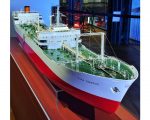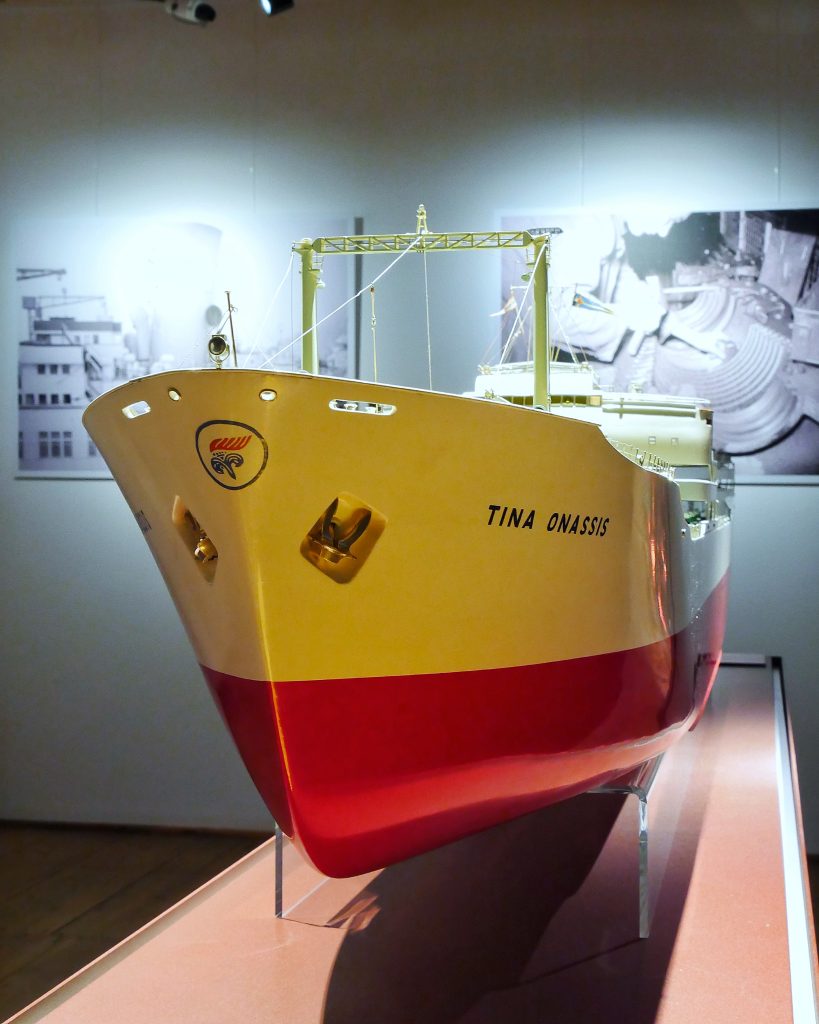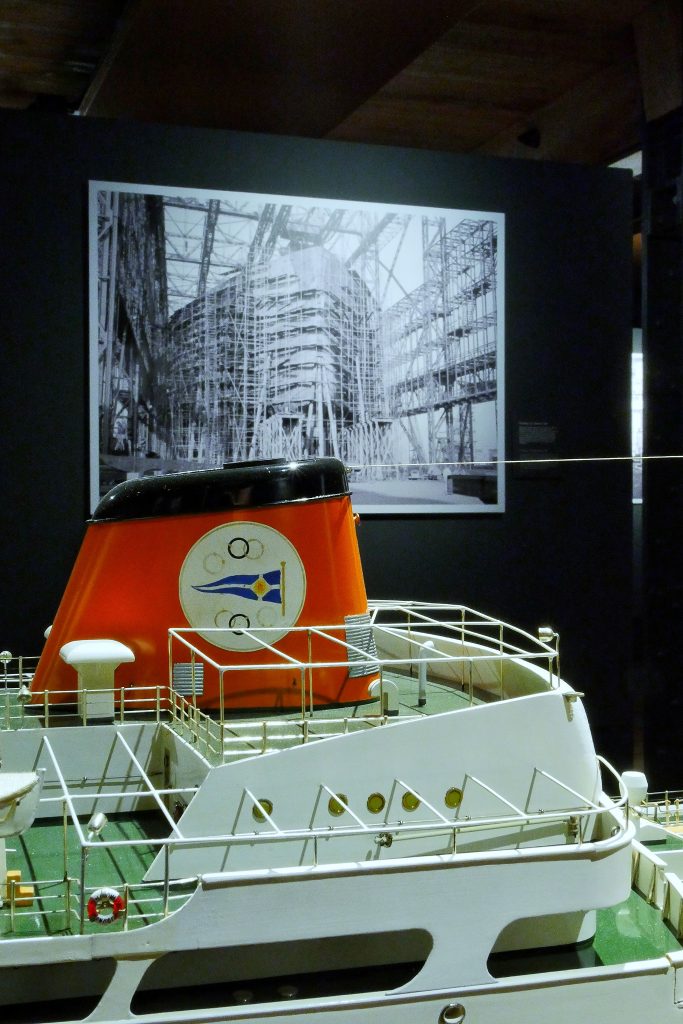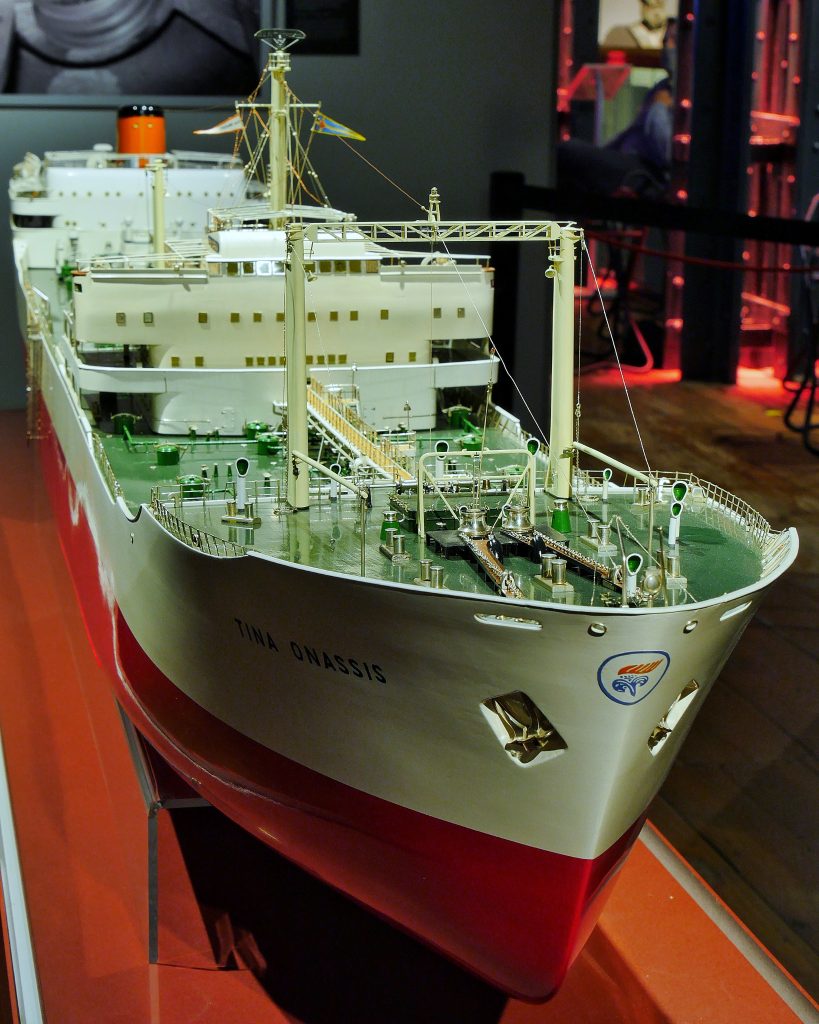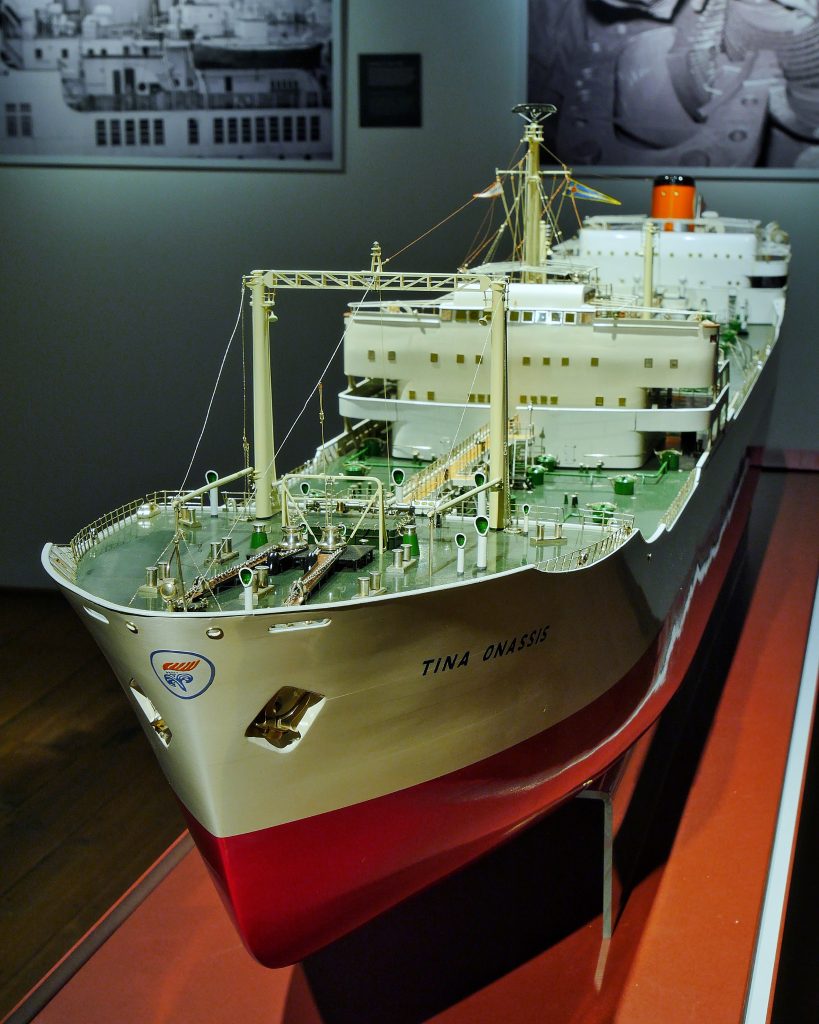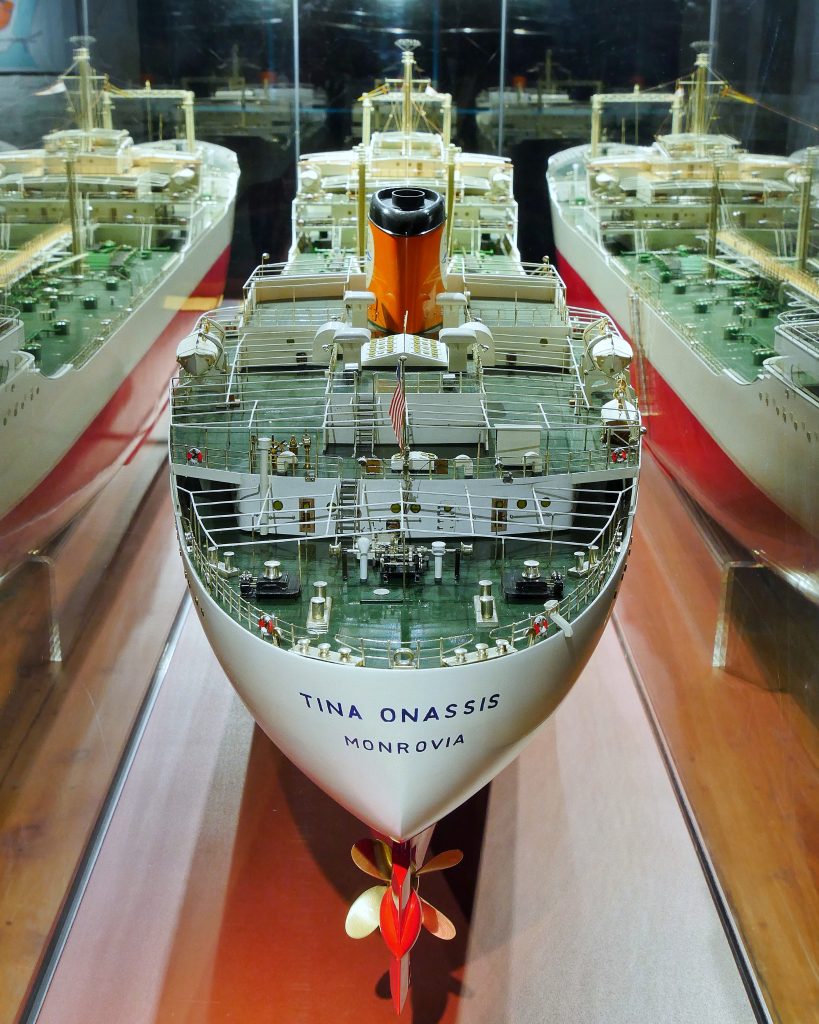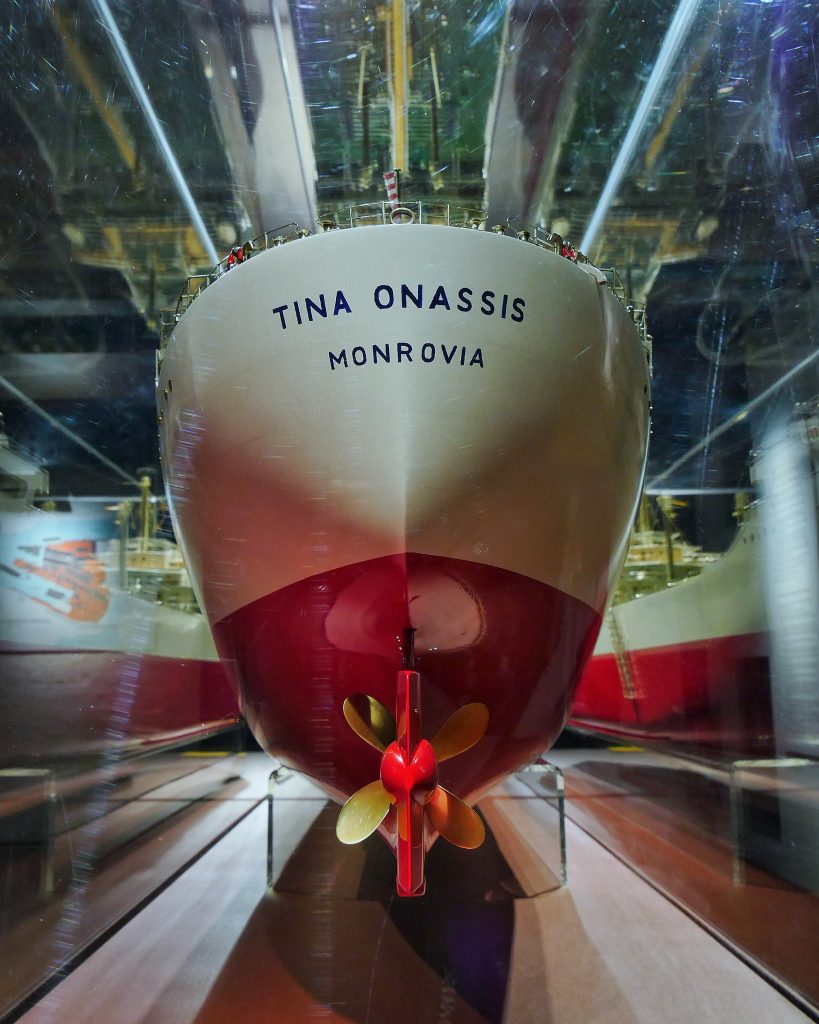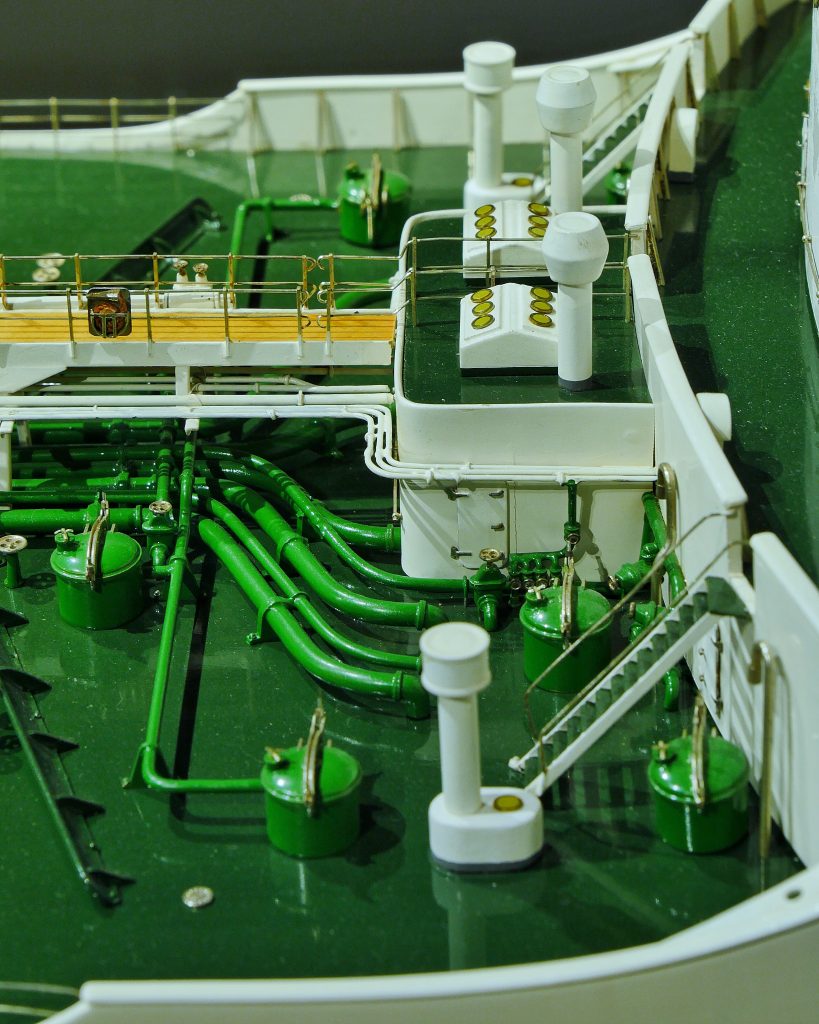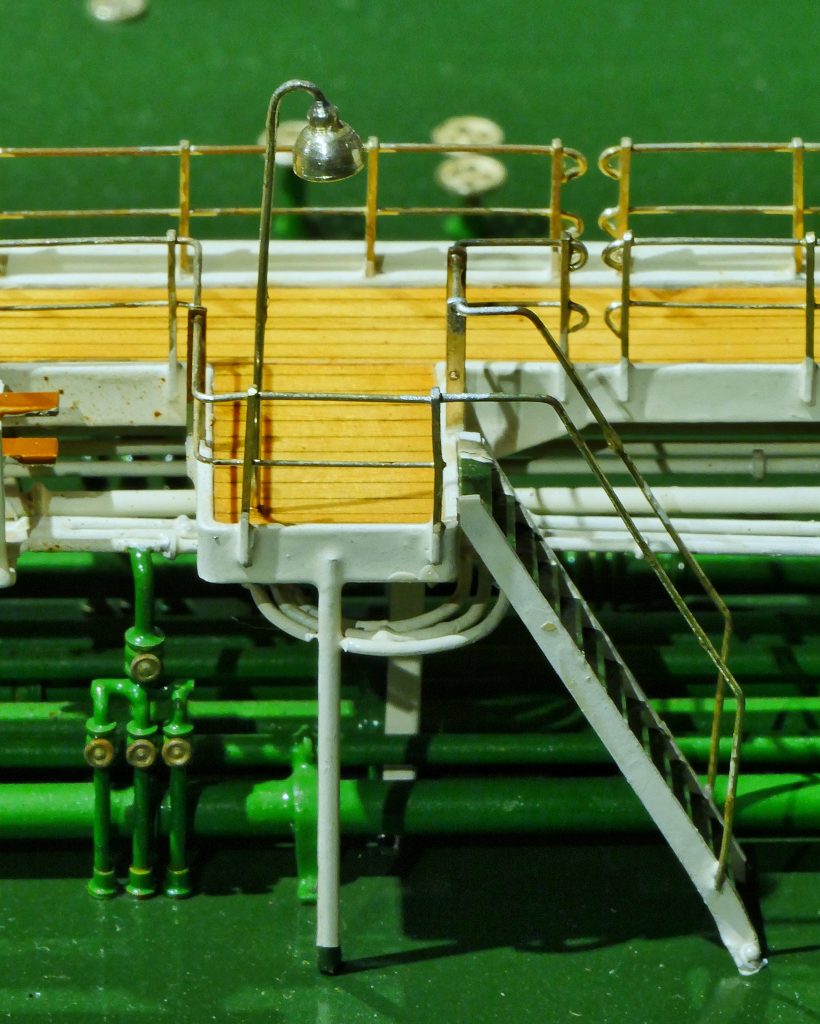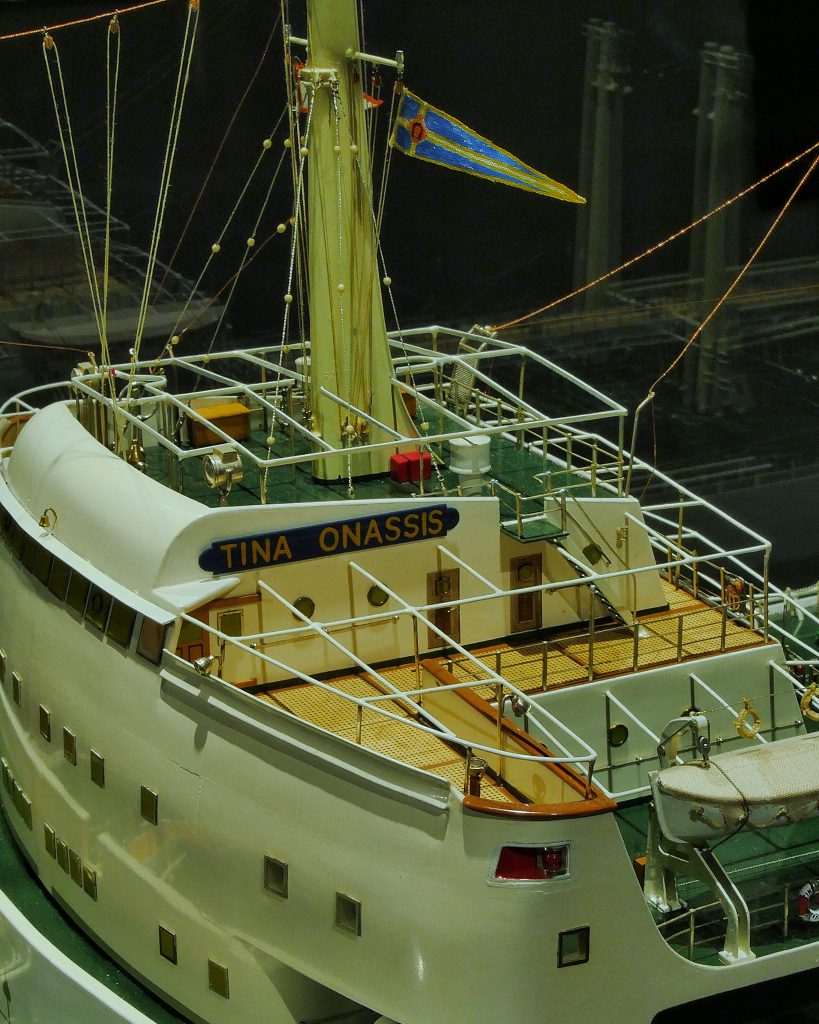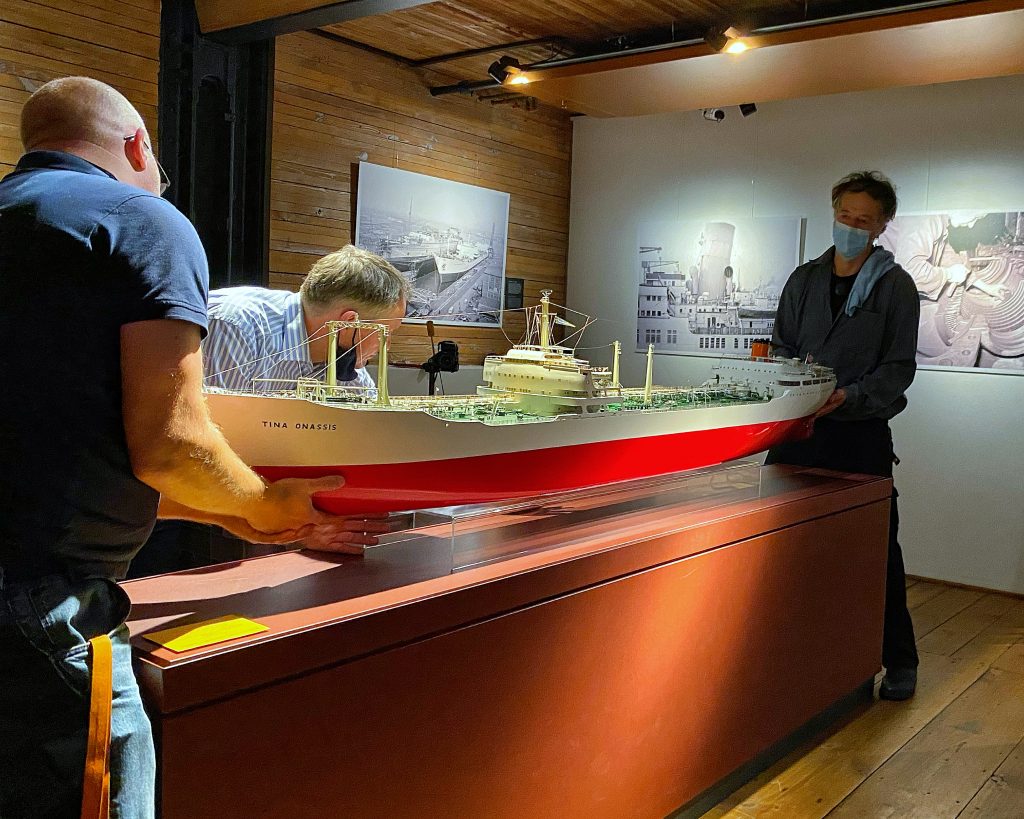The Tanker Tina Onassis is one of the stars of our Special Exhibition “Howaldtswerke – a shipyard during the economic miracle” (ending next Sunday the 22nd of August!). During the 1950s and 1960s, this shipyard wrote a memorable chapter of the shipbuilding History of Hamburg. With the construction of the Tina Onassis in 1953, it wrote world history.
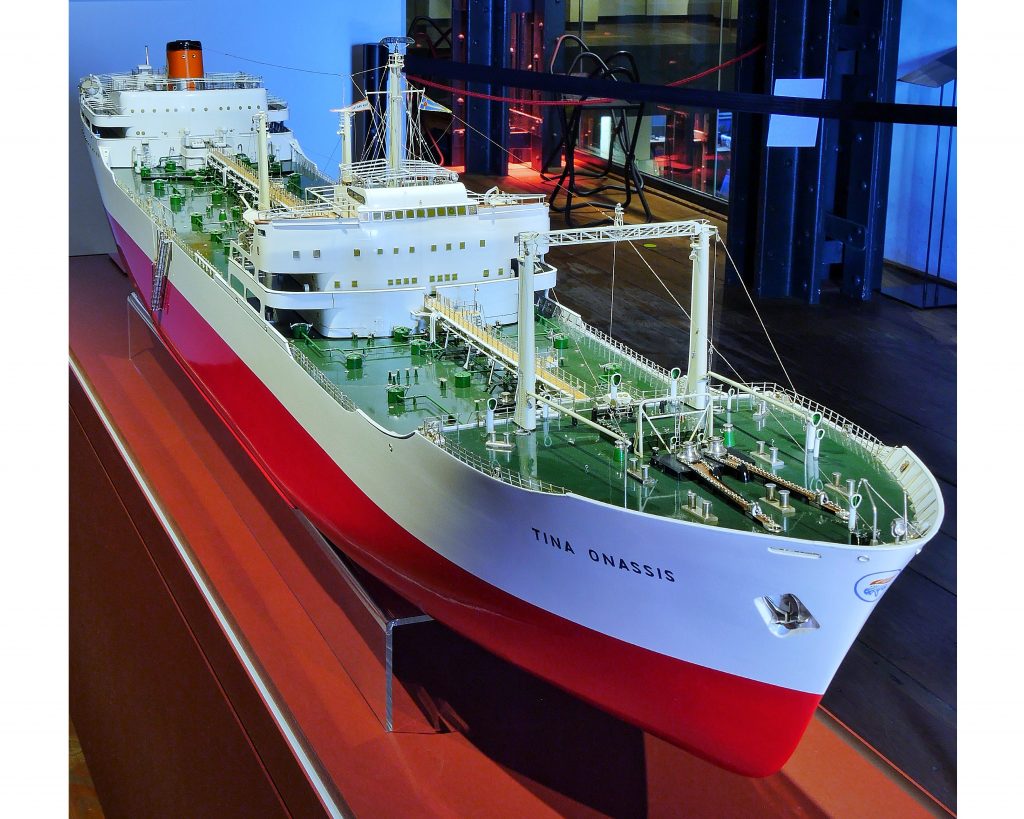
The rebirth of German shipbuilding
World War II had ruined German shipbuilding, as it did with other heavy industries and most aspects of the German economy. The Postdam Agreement signed by the Allies on August the 1st 1945, contained a prohibition for the construction of new ships as part of the measures for the demilitarization of the country. This prohibition was slowly lifted from 1948 until 1951. By that year the so called German “economic miracle” had started in Western Germany. A long list of factors kick-started a phase of great economic growth in the Federal Republic of Germany that was founded in 1949.
At the same time, the German merchant navy had to be rebuilt and the global logistics chain was in need of new ships. This started a golden age of shipbuilding in the country, of which the Hamburger Howaldtswerke shipyard would become a protagonist. German shipyards were being rebuilt and offered a combination of modern installations, good know-how and low prizes by comparison in the in international market. This attracted the interest of international investors among which the figure of shipping tycoon Aristotle Onassis (1906-1960) stood out.
Onassis showed a special talent for taking calculated risks and making profit from the geopolitical situations and crisis he lived through in his career. In this context, he started contact with some German shipyards that were laying idle during the shipbuilding prohibition. In 1952 he created his shipping company Olympic Maritime, of which he automatically created a German branch with seat in Hamburg. Through it, Onassis will invest 300 Million Deutsche Mark in the production of Oil Tankers in Germany in the following years. The Tina Onassis was not just one of them, she was a revolution regarding the size a tanker was supposed to have.
Building the Tina Onassis
Early 1952, the Howaldtswerke of the city of Kiel had received an order to build 8 tankers with a capacity for 32500 DWT for the company World Tanker Inc. It was guessed at that point that that was the maximal size a tanker ship may have and people spoke of „Supertankers“. But the company of Onassis was looking beyond that size. On October the 15th 1952 the public was surprised by the following press release:
„Gigantic tanker laid up!
Yesterday at the Hamburger Howaldtswerke, the first tanker with a capacity for 45000 tonnes was laid up with the hull number 885. This larges tanker of the world – two sister ships have been ordered as well – has been ordered by the Central American Steamship Company, that belongs to the tanker owner Onassis. This tanker will be launched between May and June 1953. It will be approximately 220 m long and once completed reach a speed of 16 knots with a power of 17500 hp.“
Noting in the press release was exaggerated, despite the fact that those numbers were extremely high for that time. The Howaldtswerke of Hamburg had taken quite the risk with the project. The order demanded a ship that could carry up to 50000 cubic meters of oil, with a single propeller powered by steam turbines and reaching up to 16 knots. Also, it was the handed that the ship would be able to pass the Suez Canal when loaded with no more than 4000 tonnes less than her maximal capacity. The Suez Canal accepted ships with a maximal draught of 10,5 m.
The Howaldtswerke had experience building tankers, but the form of the hull of this ship had to be something new. A total of 5 designs were made for tests. The shipbuilding testing institute of Hamburg, the HSVA, had been destroy and dismantled after the war. A new HSVA was created in 1952, but was not yet active when the tests for the Tina Onassis need to be done. The testing institute in Berlin had a long waiting list due to the German shipbuilding boom, and couldn’t take on the tests. For those reasons, the tests were carried out in the shipbuilding testing institute in El Pardo, Madrid, Spain. Each of the 5 design was built as a 6 m long scale testing model. Further tests were carried out to determine the form of the propeller. The process of finding a fitting design was even more complicated because the shipping classification societies (in this case the Germanische Lloyd) had only set building regulations for tankers of a size up to 32000 DWT. The building of this ship was an adventure in unchartered territories. The result was not only an extremely safe and seaworthy ship, but also a really elegant one. The lines of the Tina Onassis were classical, almost yacht-like. She fulfilled or exceeded all and every single demands of her owner.
A special perk of the ship was her pumping system. It had a capacity to pump up to 1000 tonnes of oil per hour. This meant that the ship could be completely filled or emptied in only 9 hours, reducing the stay in a harbor to about 10 hours. Already back in the day there were concerns about how this fast operations, that saved a lot of money to her owners, affected her crew. Shore leaves in the merchant navy back then were quite long, giving the seafarers a small holiday in every port. This wouldn’t be possible aboard the Tina Onassis. As a compensation, a lot of care was made in the construction of the habitations of the crew. Cabins were roomy and the furniture was of high quality. In general, the accommodations of the crew were the equivalent of that of a second class aboard an ocean liner of the 1950s – which was quite a luxury. The problem of shorter stays at ports for seafarers has been growing in the merchant navy since the containerisation, and not many modern ships compensate it by offering more comfort to those aboard.

Launching the Tina Onassis
The launching ceremony of the Tina Onassis took place on July the 25th 1953 – slightly delayed for the prediction in the press release. It was an historical event for Hamburg, with 20000 guests invited to attend it at the shipyard and about 80000 attending from the shores. All boats and harbor ferries were booked. The Senate of the City had set the date on a Sunday to allow as much citizens as possible to take part on the celebration. The date was consulted with meteorologists to ensure there would be „Greek weather“. Every prominent person in Hamburg stood beside the ship.
The ceremony started at 3 pm o’clock. Schecker, the director of the Howaldtwerke, gave the opening speech where he remembered that on that same spot, on May the 23dr 1912, the ocean liner SS Imperator had been launched – the back then largest commercial ship of the world. After a list of thanks he introduced the stars of the event: the Onassis family. It was the 2 and a half year old Christina Onassis that hit the button to launch the champagne bottle against the hull, naming the ship after her mother Athina Mary „Tina“ Onassis, and her 5 year old brother Alexander Onassis who hit the button to tart the launching of the ship. All worked perfectly. A list of 200 VIPs celebrated that evening with the Onassis couple at the Hotel Atlantik. The Tina Onassis was ready to start her career.
Her career was successful and without any notable incidents. But by the mid-1970s, the once largest tanker of the world had become a small one. The incidents of the Six Days War brought Egypt to close the Suez Canal creating an international crisis and a shortage of oil. The industry responded creating the Very Large Crude Carriers (VLCC) and the Ultra Large Crude Carriers (ULCC). This gigantic tankers were made to make long journeys surrounding Africa or South America carrying enormous quantities of crude oil and reducing the price of the voyage. Tankers like the Tina Onassis could simply not compete with them at that point. For that reason, the Tina Onassis was sent to the Yung Tai Steel & Iron Works Company in Kaohsiung, Taiwan, where the scrapping works started on September the 3rd 1975.

